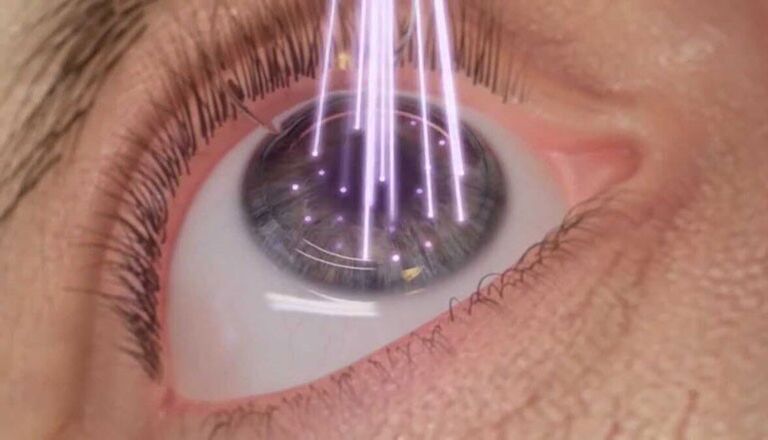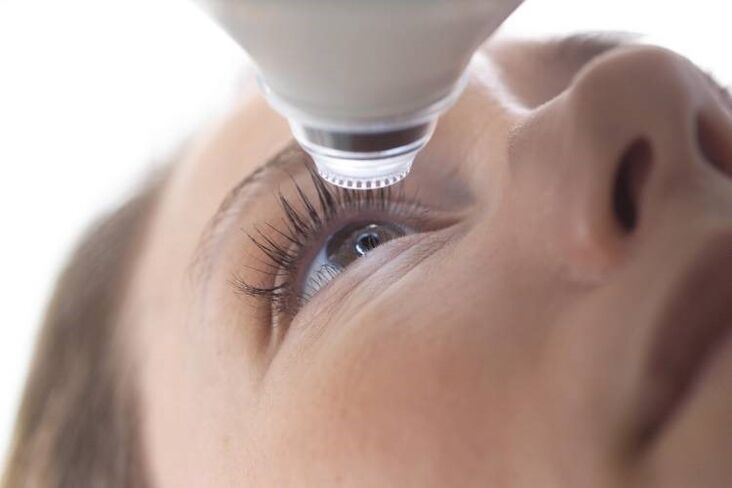Diseases of the visual system lend themselves well to correction, but if the disease is ignored or conservative therapy does not bring the desired results, then surgery to restore vision is recommended. It allows you to eliminate the pathological processes of the visual system, maintain its function, eliminate the possibility of disease consequences.
Modern ophthalmology provides several effective methods for restoring the operation of the optical system, but before considering the type of ophthalmic operation, it is important to know the signs of its implementation, as well as possible consequences.

When Is Vision Restoration Surgery Needed?
Surgery to restore vision in ophthalmology belongs to the category of refractive surgery. The main goal of such treatment is not only to preserve the function of the visual system, but also to reduce dependence on contact lenses and glasses. Among the main signs for surgery, several diseases can be distinguished:
- cataract;
- glaucoma;
- keratoconus;
- myopia;
- strabismus;
- retinal atrophy;
- lens replacement;
- eye injuries.
All these diseases can be treated without surgery, but only when irreversible pathological processes do not occur in the structure of the visual system.
Type of operation
There are several methods to restore vision through surgical treatment. All of them have their pros and cons, but sometimes they are considered the only way to maintain the function of the visual system. Consider the most effective type of surgery to restore vision.
Laser correction
In modern ophthalmology, laser vision correction is considered the "gold standard", which allows you to restore vision with minimal risks and consequences. In the process of carrying out such manipulations, high -tech equipment is used, which makes it possible to correct defects in the optical system with high accuracy. Indications for laser vision correction are myopia, hyperopia, and astigmatism. All of these pathologies are united by the general term "ametropia", which implies a disease associated with the focus of the eye. There are several types of laser correction:
LASEK. The procedure is performed with a thin cornea, and the laser beam itself only affects the upper layer of the eye. During surgery, a valve is formed from the epithelium and membrane, then it is fixed with a soft lens, which is removed after a few days. This type of surgery takes 5-7 minutes, and the effect of treatment can be seen not the 4th day after surgery. LASEK laser vision correction is considered the only method that can be used for children.
LASIK. Basic surgery to restore vision, which allows you to get rid of myopia of various stages of complexity, as well as the early stages of astigmatism. During surgery, the laser beam penetrates into the inner layer of the eyeball, reshaping the surface layer of the cornea and eliminating defects in the inner structure. The duration of the operation does not exceed 15 minutes on each eye. The disadvantage of such operations is the inability to predict the anatomical features of the eye in patients.
Operation with laser vision correction methods is very effective, but even with high -quality procedures, after a while, visual acuity may decrease, which will be an indication for re -correction.

Vitrectomy
Vitrectomy is performed if there is a need for complete or partial removal of the vitreous body of the eyeball. The procedure is performed under general anesthesia. The operation can take up to 3 hours. During the operation, a small puncture is made in the eye socket, where the necessary manipulations are performed.
The main indication for surgery is restoration of vision after age -related hemorrhage or retinal detachment. After surgery, complications are possible in the form of corneal edema, increased intracranial pressure, or a greater decrease in vision. The prognosis after surgery depends on many factors, in particular the stage of the pathological process, the type of prosthesis to replace the vitreous body. With irreversible damage to the optic nerve, the effects of the operation will disappear.
Scleroplasty
Ophthalmic surgery to strengthen the outer skin of the eye (sclera). It is used not to correct vision, but to normalize the degree of myopia in at -risk patients. Scleroplasty procedures are often performed in adolescents, because during this period the shape of the eye changes.
During surgery, a special flap is inserted behind the posterior wall of the eyeball to strengthen the sclera. More often polymers or biological components are used. After a while, adhesions appear at the injection site, and after a few months, the blood vessels grow into flaps, which will continue to support the work of the visual system.
Lens replacement
Such operations are performed with lens blurring or other degenerative processes. Often, the indication for appointment is cataract, glaucoma. The operating procedure is quite difficult, the implants are selected individually, which will suit the gender, age of the patient and other characteristics of his body.
The lenses were replaced under local anesthesia. During the operation, the doctor makes a small incision with a laser, after which, using a special tool, he melts the patient's lens, and removes it from the eye. After the procedure, the prepared grafts are installed. The operation lasted no more than 30 minutes, then stitches were applied, the patient stayed in the clinic for several hours, then went home.
Complications after such surgery are extremely rare. Often after that, laser vision correction is required.
Keratoplasty (corneal replacement)
This type of operation is quite complex, requiring high professionalism of the surgeon. The indication for its implementation is the treatment of congenital and acquired defects, which manifest themselves as a result of injury or as a result of a specific disease.
The duration of the operation does not exceed 30 minutes. During the course, the doctor removes part of the cornea with a laser or scalpel, and puts the donor tissue in its place. Postoperative sutures are kept for about a year, then special lenses are selected to reduce the risk of infection. The recovery period takes up to 4 weeks, consisting of regular eye drops with antiseptic drops.
Crosslink
It is prescribed for various corneal diseases, allowing you to strengthen ligaments and other fibers in corneal tissue with dystrophy or keratoconus. In the process, local anesthesia is applied, then part of the cornea is cut using a special device, vitamin B2 is implanted, and irradiation is carried out, which makes it possible to strengthen the tissue by more than 200%.
The first time after surgery, patients wear protective lenses, periodically visiting an ophthalmologist. If the operation is successful, the effects last for 10 years.
Retinal laser coagulation
Surgery to repair retinal tissue. The procedure in 70% of cases brings positive results, and the patient himself has the opportunity to return to his normal way of life after a day. The operation is performed under local anesthesia, while the duration of the procedure does not exceed 20 minutes.
Prior to surgery, drops are implanted into the eye to widen the pupil, a protective lens is placed, through which the laser beam passes. Due to the high temperature, the damaged cells and small ducts stick together.
Indications for the appointment of such manipulations are retinal diseases or tumor -like processes. In some cases, after laser coagulation of the retina, inflammation and turbidity of the lens develop, which requires additional treatment.

How to prepare
If there are indications for surgical treatment, the doctor prescribes a series of examinations to the patient, giving useful recommendations for preparing specific procedures to eliminate defects in the visual system:
- A week before surgery, you should stop wearing glasses and contact lenses.
- Pass all required tests and pass the prescribed diagnostics.
- Do not consume any alcohol for 3-4 days.
- Reject cosmetics.
- Good rest, good sleep.
With strong pleasure, you can take a mild sedative on the recommendation of a doctor.
Postoperative period
Before surgery to restore vision is performed, the ophthalmologist will familiarize the patient with the rules of preparation, and the postoperative period is also considered an important stage. Subject to certain rules after any surgery, the risk of complications is significantly reduced, the prognosis for successful recovery increases:
- The first 2 days you need to sleep on your back.
- In the early postoperative period, it is forbidden to rub your eyes or use cosmetics.
- Before dripping eye drops, wash your hands thoroughly.
- Wash your face with boiled and warm water, avoid it getting into your eyes.
- Eliminate prolonged TV viewing or interruptions on the computer.
- Postpone pregnancy planning for several months.
- In the first months, excluding strenuous physical activity, go to the solarium, swimming pool or sauna.
- Avoid prolonged exposure to the sun.
- Avoid drinking alcohol and smoking.
- Proper and healthy nutrition.
After any surgery to restore vision, it is necessary to visit an ophthalmologist regularly, undergo the necessary examinations, and use prescribed medications. Adherence to all rules will help minimize the risk of possible complications, improve vision and overall well -being.
discovery
Surgery to restore vision is performed when other treatment methods do not give the desired effect or the disease is ongoing. Therefore, to avoid the severe stage of any ophthalmic disease, you need to visit an ophthalmologist regularly and undergo the necessary treatment. After all, the earlier the disease is diagnosed, the better the prognosis for recovery.























